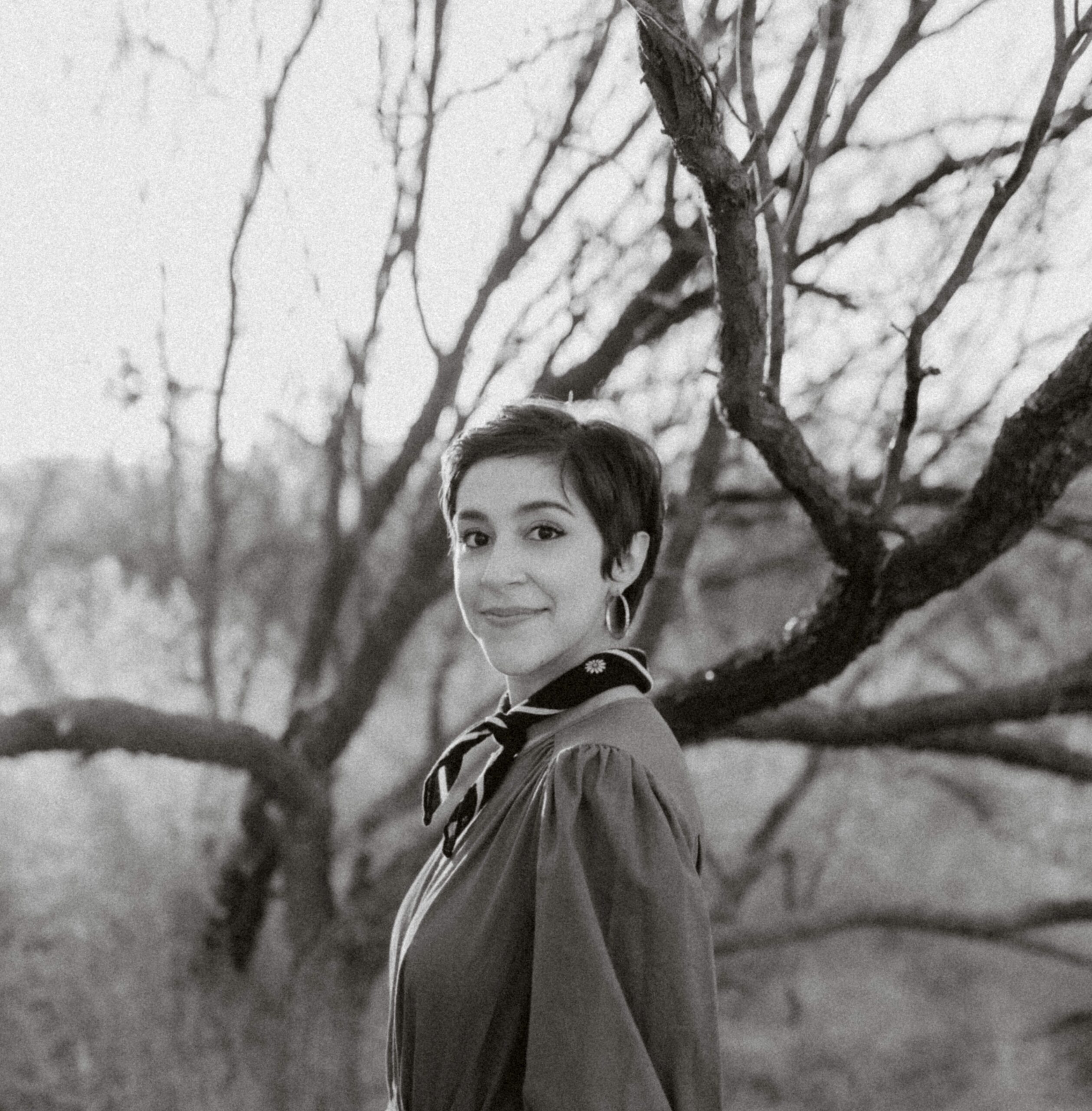In most small towns, music and arts programs are hard to come by. For Jeanette Dominquez ’22, however, growing up in Odessa, TX, was a very different experience.
Thanks to a city-funded endowment, her elementary school offered an interdisciplinary arts program. In addition, she had a musician in the family (her father) and, as she got older, she volunteered with organizations that prioritized music education. As a result, she says she’s always been surrounded by music.
When it came time to choose an undergraduate major, she chose music education at Santa Fe University of Art and Design, where she was introduced to field recording and music production techniques for the first time.
“That opened my mind to how different forms of music and sound could be explored in the academic world,” she explains. “Sound recording techniques, composition, and field recording have encouraged me to explore sound even further.”
As she moved through college, however, she decided she wanted her degree to take a cross-practice approach, so she transferred to the University of New Mexico to study a combination of liberal arts, early childhood education, music studies, and communication.
“As an undergraduate, I was introduced to a specific course on ecocultural communication,” says Dominguez. “It inspired me to play even more with the ideas of field recording, documenting ethnographies, and looking at the sound world through an academic lens.”
In addition to exploring the world of sound, she also realized that helping underserved communities gain access to music as part of early childhood education was important to her. To make sure other young students had the same positive experiences she did as a child, she worked with summer camps and nonprofit child development agencies.
After earning her bachelor’s degree, Dominguez entered the workforce as a teacher. Even though she wasn’t teaching sound or music, she still managed to tie the subject into lesson plans—even with something as simple as taking students on sound walks and encouraging them to “tune out to tune in,” as she describes it.
Through this journey, she decided the time was right to step away from full-time employment and search for a graduate program to explore her love of sound.
 “I didn’t think I would find a program that was so driven by sound,” she explains. “There aren’t that many that fit what Northwestern’s Sound Arts and Industries program has to offer. Even just talking with them and going through the meet-and-greets to learn about the program, I felt so comfortable. Everyone has been so helpful—from my initial interest in the program to being a current student. This is a space where you can approach anyone, faculty or not, and they’re so willing to help, listen, or provide feedback.”
“I didn’t think I would find a program that was so driven by sound,” she explains. “There aren’t that many that fit what Northwestern’s Sound Arts and Industries program has to offer. Even just talking with them and going through the meet-and-greets to learn about the program, I felt so comfortable. Everyone has been so helpful—from my initial interest in the program to being a current student. This is a space where you can approach anyone, faculty or not, and they’re so willing to help, listen, or provide feedback.”
She appreciates the structure of the program, which gives her time to focus on a small number of classes at once. The entire cohort gets to experience four core courses together. The combination of the Introduction to Sound Production course, which provides studio time, and the Introduction to Sound Studies course, which involves sound theory, has given her a set of valuable tools that will prove useful as she moves further into the study of sound.
From there, students select electives to build out the rest of their program experience. Dominguez decided to choose as many film-focused courses as possible. Through these classes, she also gets to partner with students in other Northwestern departments, providing sound support for three student films this year.
“I’ve had a great experience with [Associate Professor] Calum Walter and all his courses,” she says. “He does sound design and recording for his own films. Everyone collaborates, which is such a key part of the program. We get to read articles and discuss them from our different points of view. That drives our work in ways we never thought possible.”
Another highlight for her has been the new Historical Thinking for Sound Artists course taught by Associate Professor David Chavannes. “By the second week, it was already helping me establish a foundation for how I’ll use these tools in fields I’m now learning about to drive my future work.”
She says these lessons will help unite her passions for early childhood education, documenting oral history, and music as she builds a freelance sound design composition business focused on storytelling and ethnographic work.
“We’re all incredibly lucky to be where we are right now in the world of sound studies,” she says, “surrounded by the scholars and teachers at Northwestern. It’s such an incredible school, and it offers so much more than I could have ever imagined. I’m excited to continue working through these classes; everything I’m learning will guide my work.”
Read more on our blog and follow Northwestern’s Sound Arts and Industries program on Facebook and Twitter.
